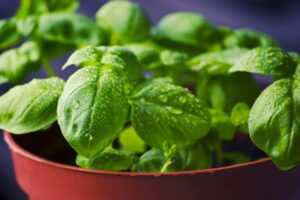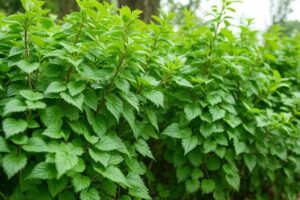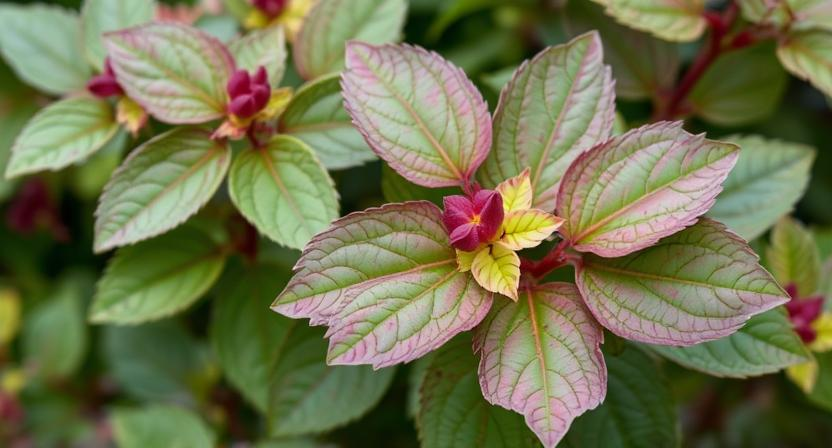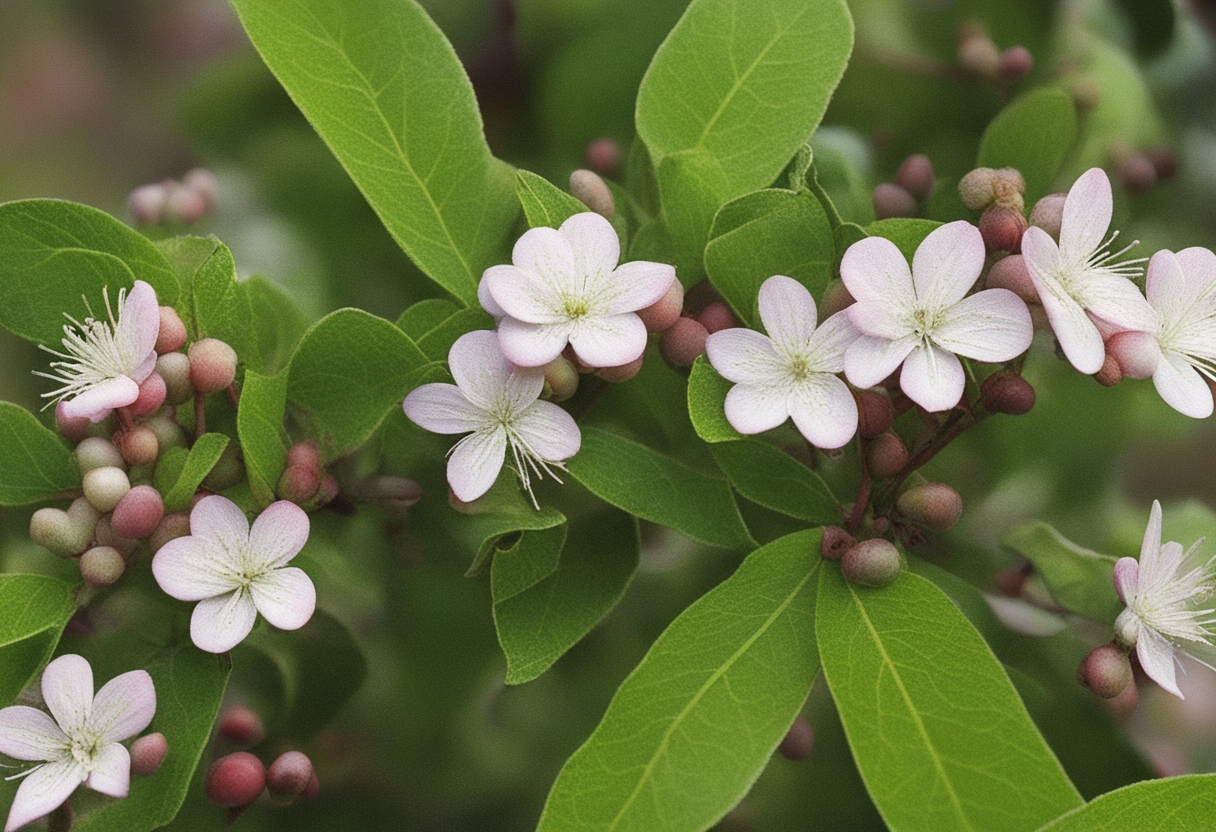Fungal Diseases

Fungal diseases are widespread in various plants, causing significant damage to crops and gardens. One common fungal infection is powdery mildew, characterized by a white powdery coating on the leaves, stems, and flowers of plants. This infection is often seen in humid and warm environments, spreading rapidly and reducing the plant’s ability to carry out photosynthesis. As a result, the infected plants may experience stunted growth and produce lower yields. Controlling powdery mildew often involves regular pruning of infected plant parts, improving air circulation, and using fungicides to prevent further spread.
Another fungal disease that poses a threat to plants is rust disease. It manifests as rust-colored masses or pustules on the leaves, stems, and fruits of infected plants. This infection is highly contagious, spreading through wind or water splashes. Rust diseases weaken the plants, causing defoliation, wilting, and reduced fruit quality. Implementing preventive measures, such as removing and destroying infected plant debris, using resistant plant varieties, and applying fungicides, can help manage rust diseases. Timely detection and appropriate treatment of fungal diseases are crucial to ensure healthy plants and bountiful harvests.
• Powdery mildew is a common fungal infection characterized by a white powdery coating on plants.
• It thrives in humid and warm environments, reducing the plant’s ability to carry out photosynthesis.
• Infected plants may experience stunted growth and produce lower yields.
• Controlling powdery mildew involves regular pruning, improving air circulation, and using fungicides.
• Rust disease is another fungal infection that poses a threat to plants.
• It appears as rust-colored masses or pustules on leaves, stems, and fruits.
• Rust diseases spread through wind or water splashes and weaken the plants.
• Measures like removing infected debris, using resistant plant varieties, and applying fungicides can help manage rust diseases.
Overall:
– Fungal diseases are widespread in various plants causing significant damage to crops and gardens.
– Powdery mildew is a common fungal infection characterized by its white powdery coating on leaves, stems, and flowers of plants.
– Rust disease manifests as rust-colored masses or pustules on infected parts of the plant.
Bacterial Infections
Bacterial infections are a common occurrence in both plants and animals. These infections are caused by harmful strains of bacteria that invade the host’s body and disrupt normal physiological functions. In plants, bacterial infections can lead to severe damage and even death of the affected plant. Symptoms of bacterial infections in plants often include browning or wilting of leaves, formation of lesions or cankers on stems, and stunted growth. In severe cases, bacterial infections can result in the complete collapse of the plant’s vascular system, leading to death. Farmers and gardeners need to be vigilant in detecting and managing bacterial infections to minimize the impact on their crops or ornamental plants.
One of the most common bacterial infections in plants is called bacterial leaf spot. This disease affects various plant species and is caused by different strains of bacteria. Bacterial leaf spot manifests as small, water-soaked lesions on the leaves, which eventually expand and turn into dark brown or black spots. In some cases, these spots may have a yellow halo surrounding them. This disease can spread rapidly, especially in wet conditions, as the bacteria are easily disseminated through moisture. Control measures for bacterial leaf spot include removing infected plant material, practicing proper sanitation in the garden or field, and using copper-based fungicides or bactericides to manage the infection.
• Bacterial infections can occur in both plants and animals
• Harmful strains of bacteria invade the host’s body and disrupt normal physiological functions
• In plants, bacterial infections can lead to severe damage and even death
• Symptoms of bacterial infections in plants include browning or wilting of leaves, formation of lesions or cankers on stems, and stunted growth
• Severe cases can result in the complete collapse of the plant’s vascular system, leading to death
• Farmers and gardeners need to be vigilant in detecting and managing bacterial infections to minimize impact on crops or ornamental plants
One common bacterial infection in plants is called bacterial leaf spot:
– Affects various plant species caused by different strains of bacteria
– Manifests as small water-soaked lesions on leaves that expand into dark brown or black spots
– Some spots may have a yellow halo surrounding them
– Spreads rapidly especially in wet conditions due to moisture dissemination
– Control measures include removing infected plant material, practicing proper sanitation, using copper-based fungicides/bactericides.
Viral Infections

Viral infections are a common problem in both animals and plants. In plants, viral infections can cause significant damage to crops, leading to reduced yields and economic losses for farmers. One of the most well-known viral diseases in plants is the Tobacco mosaic virus, which affects a wide range of plants including tobacco, tomatoes, and peppers. This virus manifests as mosaic-like patterns on the leaves, resulting in stunted growth and reduced fruit production. Other viral infections in plants include the Tomato yellow leaf curl virus, which causes yellowing and curling of the leaves, and the Cucumber mosaic virus, which causes mosaic patterns on the leaves and distorted growth.
Controlling viral infections in plants can be challenging, as there are limited treatment options available. Prevention is key, and farmers often rely on good agricultural practices such as sanitizing tools and equipment, using disease-free seeds and plants, and implementing strict hygiene measures to minimize the spread of viruses. In some cases, genetic resistance can also be an effective strategy for managing viral infections. By identifying and breeding plants that are naturally resistant to specific viruses, farmers can reduce the risk of infection and minimize losses. Additionally, research efforts are ongoing to develop new technologies and strategies to combat viral infections in plants, offering hope for more effective control measures in the future.
• Viral infections are a common problem in both animals and plants.
• In plants, viral infections can cause significant damage to crops, leading to reduced yields and economic losses for farmers.
• The Tobacco mosaic virus is one of the most well-known viral diseases in plants, affecting tobacco, tomatoes, and peppers.
• Other viral infections in plants include the Tomato yellow leaf curl virus and the Cucumber mosaic virus.
• Controlling viral infections in plants can be challenging as there are limited treatment options available.
• Prevention through good agricultural practices such as sanitizing tools and equipment is crucial to minimize the spread of viruses.
• Using disease-free seeds and plants also helps reduce the risk of infection.
• Implementing strict hygiene measures on farms can further prevent the spread of viruses among crops.
• Genetic resistance plays a role in managing viral infections by breeding naturally resistant plants.
• Ongoing research efforts aim at developing new technologies and strategies for more effective control measures against viral infections in plants.
Root Rots
Root rot is a common and significant problem faced by many plants, especially those grown in poorly drained soil or over-watered conditions. This fungal disease is caused by several species of fungi, including Phytophthora and Pythium, which attack the roots of plants, leading to rotting and decay. As a result, the affected plants experience stunted growth, yellowing leaves, and wilting. If left untreated, root rot can eventually lead to the death of the plant. It is important for gardeners and farmers to be vigilant in recognizing the signs of root rot early on and take appropriate measures to prevent its spread.
Prevention and control of root rot primarily involve improving drainage in the affected area. This can be achieved by amending the soil with organic matter such as compost and creating raised beds. Additionally, it is crucial to avoid over-watering and maintain proper watering practices, allowing the soil to dry out between watering sessions. Moreover, the use of fungicides specifically formulated to target root rot-causing fungi can assist in managing the disease. By taking these proactive measures, gardeners and farmers can protect their plants from the detrimental effects of root rot, ensuring their healthy growth and productivity.
• Root rot is a fungal disease that affects plants grown in poorly drained soil or over-watered conditions.
• Phytophthora and Pythium are common fungi that cause root rot, leading to decay and stunted growth in plants.
• Signs of root rot include yellowing leaves, wilting, and eventual death of the plant if left untreated.
• Prevention involves improving drainage by amending the soil with organic matter and creating raised beds.
• Proper watering practices, allowing the soil to dry out between waterings, can help prevent root rot.
• Fungicides formulated for treating root rot-causing fungi can be used as a control measure.
Leaf Spots
Leaf spots are a common type of plant disease caused by various fungi and bacteria. These diseases manifest as small, circular or irregular spots on the leaves, often characterized by discoloration or necrosis. Leaf spots can affect a wide range of plants, including both ornamental and edible varieties. While leaf spots may not always be fatal to the plant, they can significantly impact its health and aesthetics.
Fungal leaf spot diseases, such as cercospora leaf spot and septoria leaf spot, thrive in warm and humid conditions. They usually first appear as small, water-soaked lesions that eventually enlarge and develop distinctive features like dark margins or a yellow halo. Bacterial leaf spot diseases, on the other hand, are caused by bacteria that enter the plant through wounds or natural openings. They typically manifest as small, water-soaked lesions that may ooze bacteria-infested sap. Both fungal and bacterial leaf spots can be managed through proper sanitation practices, such as removing infected leaves and promoting good air circulation to prevent moisture buildup. Additionally, maintaining a healthy plant and avoiding overwatering can also help prevent and mitigate leaf spot diseases.
• Leaf spots are a common type of plant disease caused by various fungi and bacteria.
• These diseases manifest as small, circular or irregular spots on the leaves, often characterized by discoloration or necrosis.
• Leaf spots can affect a wide range of plants, including both ornamental and edible varieties.
• Fungal leaf spot diseases, such as cercospora leaf spot and septoria leaf spot, thrive in warm and humid conditions.
• They usually first appear as small, water-soaked lesions that eventually enlarge and develop distinctive features like dark margins or a yellow halo.
• Bacterial leaf spot diseases are caused by bacteria that enter the plant through wounds or natural openings.
• They typically manifest as small, water-soaked lesions that may ooze bacteria-infested sap.
• Proper sanitation practices can help manage fungal and bacterial leaf spots.
◦ Removing infected leaves
◦ Promoting good air circulation to prevent moisture buildup
◦ Maintaining a healthy plant
◦ Avoiding overwatering
Powdery Mildew

Powdery mildew is a common fungal disease that affects a wide range of plants. It is caused by different species of the fungi from the order Erysiphales. This disease is characterized by the appearance of a white or grayish powdery substance on the leaves, stems, and sometimes even the flowers of the affected plants.
One of the main factors contributing to the development of powdery mildew is high humidity and poor air circulation. These conditions create an ideal environment for the spores of the fungi to spread and colonize the plant surfaces. Additionally, certain plant species that are more susceptible to this disease, such as roses, grapes, and cucurbits, are often found to be particularly prone to powdery mildew infections.
The impacts of powdery mildew can vary depending on the severity of the infection and the susceptibility of the host plant. In mild cases, the disease may only cause cosmetic damage to the foliage, affecting the overall appearance of the plant. However, in more severe cases, powdery mildew can weaken the plant’s ability to photosynthesize, leading to stunted growth, decreased yield, and even plant death. It is, therefore, important for gardeners and growers to be aware of the signs of powdery mildew and take appropriate measures to prevent and control its spread.
• Powdery mildew is a fungal disease that affects a wide range of plants
• It is caused by different species of fungi from the order Erysiphales
• The disease appears as a white or grayish powdery substance on leaves, stems, and flowers
• High humidity and poor air circulation contribute to the development of powdery mildew
• Certain plant species like roses, grapes, and cucurbits are more susceptible to this disease
• The severity of the infection and susceptibility of the host plant determine the impacts of powdery mildew
• Mild cases may only cause cosmetic damage, affecting the overall appearance of the plant
• Severe cases can weaken photosynthesis, leading to stunted growth, decreased yield, or even death
• Gardeners and growers should be aware of signs and take measures to prevent and control its spread.
Canker Diseases
Canker diseases, caused by a variety of plant pathogens, are a common problem in many crops and ornamental plants. These diseases are characterized by the formation of sunken, necrotic lesions on the stems, branches, and twigs of affected plants. The pathogens responsible for canker diseases can enter plant tissues through wounds, natural openings, or through the bark, and once inside, they create an environment conducive to their growth and replication.
One of the most important factors contributing to the development of canker diseases is environmental stress. When plants are exposed to unfavorable conditions such as drought, extreme temperature fluctuations, or poor nutrient availability, their natural resistance to pathogens weakens, making them more susceptible to infection. Additionally, cultural practices such as improper pruning, excessive fertilization, and improper watering can create wounds or provide an ideal environment for pathogen colonization. In some cases, certain plant species or cultivars may also be more susceptible to canker diseases than others, further highlighting the need for careful selection when planting.
• Canker diseases are caused by a variety of plant pathogens.
• These diseases result in the formation of sunken, necrotic lesions on stems, branches, and twigs.
• Pathogens enter plant tissues through wounds, natural openings, or bark.
• Environmental stress is a major factor in the development of canker diseases.
• Unfavorable conditions weaken plants’ resistance to pathogens.
• Cultural practices like improper pruning and excessive fertilization can create wounds or ideal environments for pathogen colonization.
• Careful selection of plant species or cultivars is important to prevent susceptibility to canker diseases.
Wilt Diseases

Wilt diseases are a common concern for many gardeners and farmers alike. These diseases are characterized by the wilting and drooping of a plant’s leaves and stems. One common cause of wilt diseases is a group of soil-borne fungi called Fusarium. These fungi invade the roots of the plant and block the vascular system, preventing the plant from properly absorbing water and nutrients. As a result, the plant’s leaves begin to turn yellow and wilt, eventually leading to the death of the entire plant if left untreated.
Another common cause of wilt diseases is a bacterium called Ralstonia solanacearum. This bacterium attacks the vascular system of plants, causing them to wilt and eventually die. It can infect a wide range of plants, including tomatoes, potatoes, and bananas. Once a plant is infected, there is no cure, and the only solution is to remove and destroy the affected plant to prevent the spread of the bacteria. It is important for gardeners and farmers to be vigilant in monitoring their plants for any signs of wilting and to take immediate action if wilt diseases are suspected.
• Fusarium is a group of soil-borne fungi that can cause wilt diseases.
• These fungi invade the plant’s roots and block the vascular system, leading to wilting and yellowing of leaves.
• If left untreated, wilt diseases caused by Fusarium can result in the death of the entire plant.
• Ralstonia solanacearum is a bacterium that also causes wilt diseases by attacking the vascular system of plants.
• This bacterium can infect various plants like tomatoes, potatoes, and bananas.
• Once a plant is infected with Ralstonia solanacearum, there is no cure for it. The only solution is to remove and destroy the affected plant to prevent further spread of bacteria.
• Gardeners and farmers should regularly monitor their plants for any signs of wilting as early detection can help prevent the spread of wilt diseases.
Rust Diseases
Rust diseases are a common problem that affects a wide range of plants, including trees, vegetables, and ornamentals. These diseases are caused by fungal infections and are characterized by the presence of rust-colored spores on the surface of leaves, stems, and other plant parts. Rust diseases can cause significant damage to plants, leading to stunted growth, defoliation, and even death in severe cases. It is important for gardeners and farmers to be aware of rust diseases and take preventive measures to protect their plants.
Prevention and control of rust diseases involve various strategies, including cultural practices and chemical treatments. To prevent the spread of rust diseases, it is important to remove and destroy infected plant materials. This can help to reduce the number of spores present in the environment, limiting the chances of infection. Additionally, maintaining good plant hygiene, such as keeping the garden clean and free of debris, can also help to prevent rust diseases. In some cases, fungicides may be necessary to control severe outbreaks of rust diseases. However, it is important to carefully follow the instructions on the product label and use these chemicals responsibly to minimize any negative impacts on the environment.
• Remove and destroy infected plant materials to reduce the spread of rust diseases
• Maintain good plant hygiene by keeping the garden clean and free of debris
• Consider using fungicides as a last resort for severe outbreaks, following product label instructions carefully
• Use fungicides responsibly to minimize negative impacts on the environment
Anthracnose
Anthracnose is a fungal disease that affects a wide range of plants, including trees, shrubs, and crops. It is caused by various species of fungi, primarily from the Colletotrichum genus. The symptoms of anthracnose vary depending on the host plant, but typically include dark, sunken lesions on leaves, stems, and fruits. These lesions may develop a distinct margin and can lead to defoliation, fruit rot, and overall plant decline. Anthracnose is favored by warm and humid conditions, making it a common problem in regions with prolonged periods of rainfall or high humidity. Gardeners and farmers should regularly inspect their plants for symptoms of anthracnose and promptly take control measures to prevent the spread of the disease.
Preventing anthracnose is crucial since it can cause significant damage to plants and reduce crop yields. The first step in prevention is practicing good sanitation. This involves removing and destroying infected plant debris, fallen leaves, and fruits as they can harbor the fungal spores. Additionally, pruning infected branches, especially during the dormant season, can help limit the spread of the disease. It is also important to provide proper spacing between plants to allow for better airflow and reduce humidity levels, as high humidity creates favorable conditions for fungal growth. Fungicides can be used as a preventative measure, but they should be applied before infection occurs. Regularly monitoring the plants and applying fungicides at the right time can help protect them from anthracnose and ensure healthy growth and productivity.
• Anthracnose is a fungal disease that affects various plants, including trees, shrubs, and crops.
• It is caused by different species of fungi from the Colletotrichum genus.
• Symptoms of anthracnose include dark, sunken lesions on leaves, stems, and fruits.
• These lesions can lead to defoliation, fruit rot, and overall plant decline.
• Anthracnose thrives in warm and humid conditions commonly found in regions with prolonged rainfall or high humidity.
• Regular inspection of plants for symptoms is crucial to prevent the spread of anthracnose.
Preventing anthracnose:
– Practicing good sanitation by removing infected plant debris and fallen leaves or fruits that may harbor fungal spores.
– Pruning infected branches during the dormant season to limit disease spread.
– Providing proper spacing between plants to allow for better airflow and reduce humidity levels.
– Using fungicides as a preventative measure before infection occurs.
– Regularly monitoring plants and applying fungicides at the right time can protect them from anthracnose.












